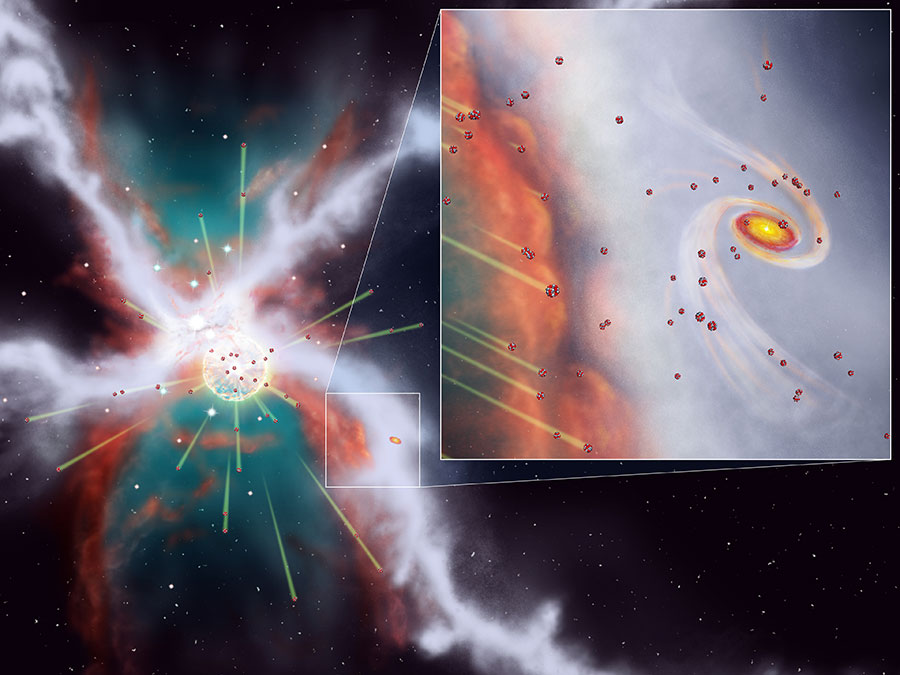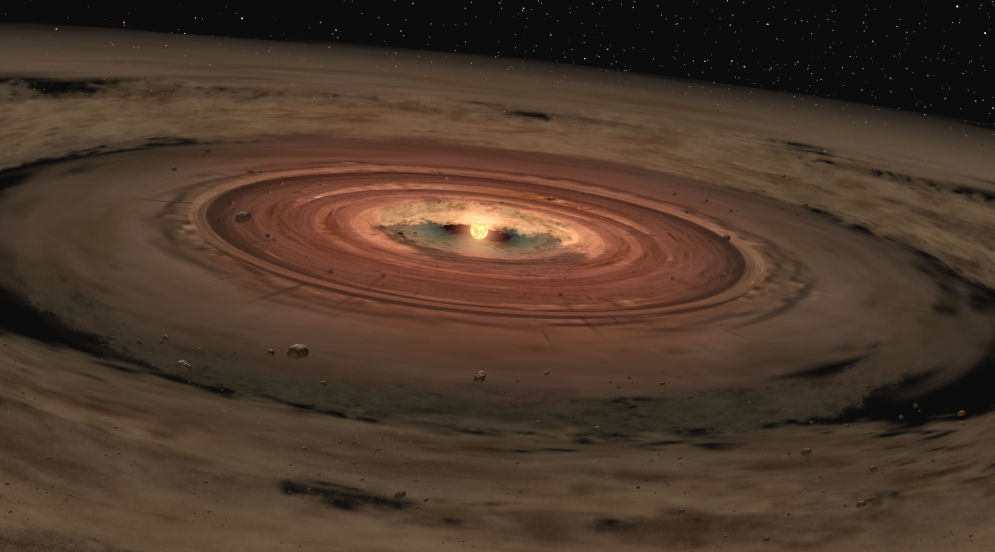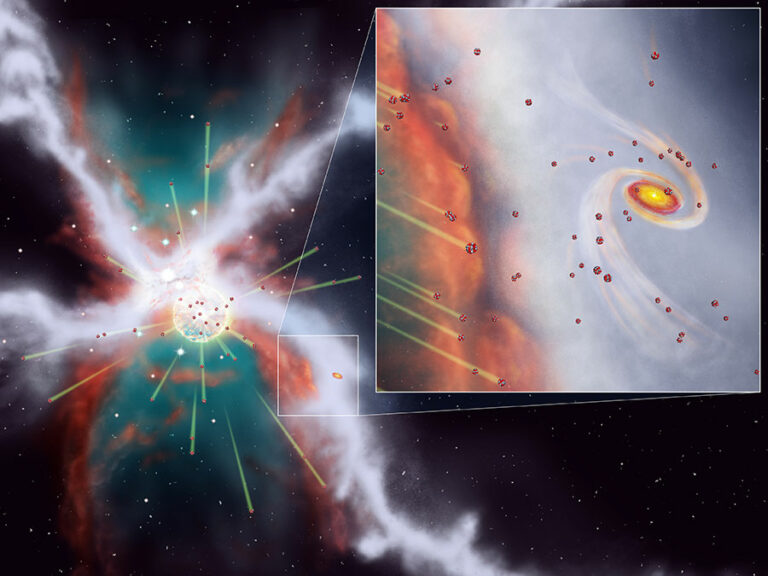The Formation of Our Solar System Was Nearly Prevented by a Supernova in Close Proximity
Approximately 4.6 billion years ago, during the early stages of our Solar System’s formation, an intriguing phenomenon occurred. Amidst a cloud of gas and dust, the Sun and planets were taking shape, but nearby, a catastrophic supernova eruption posed a grave threat, capable of wreaking havoc on everything in its vicinity. Fortunately, the infant Solar System found protection from imminent destruction through the presence of a filament of molecular gas.

A group of astronomers from the National Astronomical Observatory of Japan have proposed this fascinating hypothesis based on their examination of remnants within our Solar System. By studying meteorites, which are primitive rocks dating back to the earliest epochs of Solar System history, astronomer Doris Arzoumanian and her team have uncovered vital clues about this ancient explosion and its aftermath. These meteorites serve as invaluable repositories of information regarding the conditions prevailing within the birth cloud of our system.
Specifically, the researchers have identified a distinctive characteristic termed an “inhomogeneous concentration” of a radioactive isotope of aluminum within these meteorites. The term “inhomogeneous” signifies that the distribution of aluminum is not uniform throughout the samples, indicating that it was introduced into the forming birth cloud in a somewhat abrupt manner. This injection of aluminum-26 (26Al), an isotope forged during massive stellar explosions such as supernovae, further strengthens the link to the supernova event.
The Early Solar System’s Birth Cloud

The original birth cloud that gave rise to our Solar System has vanished completely, leaving no trace. However, valuable evidence pertaining to its chemical composition can still be found within celestial objects like planetesimals, comets, asteroids, and meteorites, which constitute debris from the Solar System. The survival of the infant Solar System despite the powerful shockwave of a supernova raises intriguing questions about its formation, particularly in relation to the presence of aluminum-26 (26Al). Shedding light on this puzzle is the role played by molecular filaments.
In a recent publication in the Astrophysical Journal Letters, the team introduces cylindrical molecular filaments as the birth sites of stars similar to our Sun. These filaments intersect with each other at specific points called “hubs.” Along these filaments, stars similar to the Sun take shape, while larger stars tend to form in the hubs. Considering the typical lifetimes of stars, the massive ones eventually explode as supernovae, enriching their immediate surroundings with heavier elements. These explosions can also disrupt the clouds where new stars are forming, impeding their growth and causing harm to existing stars and their protoplanetary disks.
What Happened to Save Our Sun and Planets?
The research team operated under the assumption that the Sun took shape within one of the dense molecular gas filaments present in the early Solar System. At a later stage in this birthing process, a nearby filament hub experienced the explosion of a supernova. The team conducted calculations indicating that the powerful blast wave would tear apart the dense filament in approximately 300,000 years.
However, the chemical evidence found in meteorites indicates the presence of a protective mechanism for the birth site. These meteorites formed within the Sun’s protoplanetary disk during the initial 100,000 years, nestled securely within the filament. It is plausible that the parent filament acted as a safeguarding “blanket” or barrier, mitigating the full impact of the shock wave. Furthermore, it facilitated the capture of radioactive isotopes from the supernova blast wave, channeling them into the ongoing formation of the Solar System, thereby accounting for the presence of aluminum-26 (26Al) in the meteorites.
Naturally, a nearby supernova is not the sole disruptive force in star formation. Another phenomenon known as “early H II feedback,” originating from nearby massive stars, can also disturb the birthplaces of stars and impede the availability of necessary material for their formation. However, the parent filament that shields against supernova shocks can also protect a birth site from being shredded by outflows generated by neighboring massive stars. To gain a deeper understanding, further investigation into streamers and filaments within molecular clouds is required. It is crucial to comprehend their formation process and the extent of their influence on star formation itself. Evidently, these structures play a significant role and demand closer scrutiny through additional observations.
Source: UniverseToday
Do not forget to share your opinion with us to provide you with the best posts !




0 Comments